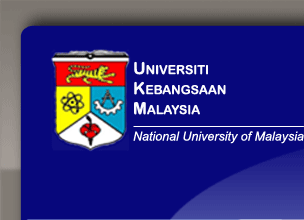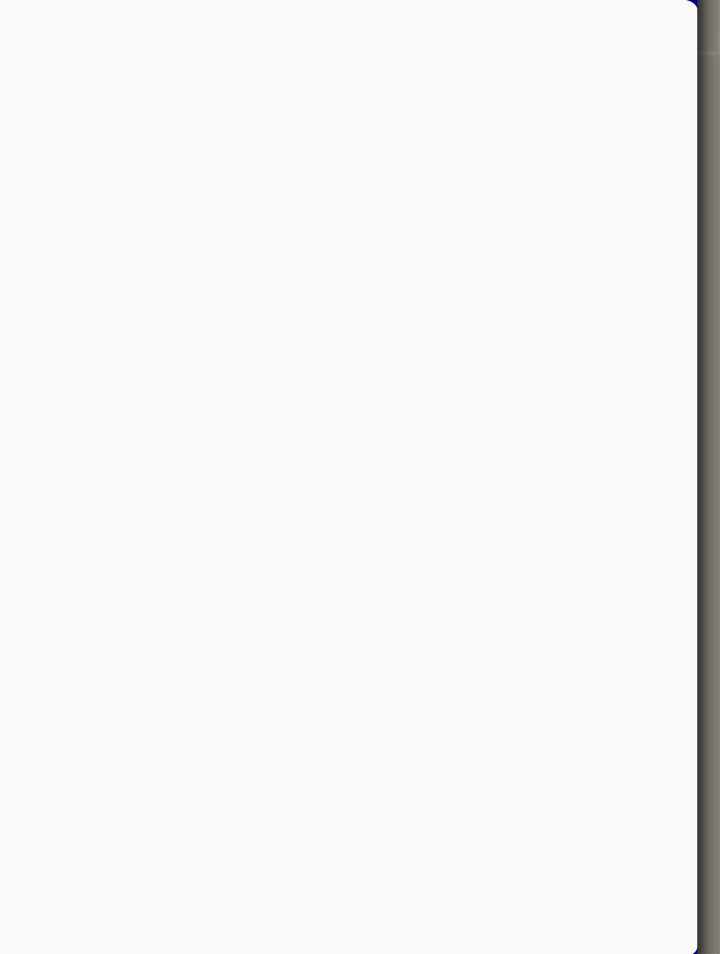



References
Albion, P. R. & Gibson, I. W. 1998. Designing multimedia materials using a Problem Based Learning design. Dlm. Corderoy, R. (pnyt.). Flexibility: The next wave. Proceedings of the 15th Annual Conference of the Australasian Society for Computers in Learning in Tertiary Education, hlm. 39 - 47. Woollongong.
Barrows, H. & Tamblyn, R. 1980. Problem-Based Learning – An Approach to Medical Education. Springer Series on Medical Education (1). New York: Springer Publishing Co.
Bonk, C.J. & Wisher, R.A. 2000. Applying collaborative and elearning tools to military distance learning: A Research Framework. Laporan Teknik 1107. United States Army Research Institute for the Behavioural and Social Sciences.
Choo Yan Tong & Low Swee Neo. 2003. Science Form 2-volume 1. Kuala Lumpur: Media Network Sdn.Bhd.
Deve J.Kunaseelan, A.A.Mary & Yeap Tok Kheng. 2006. Super Score Tutorial Science for Form 2- Developing and enhancing science process skills. Kuala Lumpur: Pearson Sdn.Bhd.
Duch, B.J., Groh, S.E. & Allen, D.E. 2001. The power of problem based learning, hlm. 69-78. Sterling, Virginia: Stylus Publishing.
Gulsecen, S. & Kubat, A. 2006. Teaching ICT to Teacher Candidates using PBL: A Qualitative and Quantitative Evaluation. Educational Technology & Society 9(2): 96-106.
Hasroni Hassan & Daisy Tan. 2006. Koleksi Soalan Peperiksaan Sebenar SAINS PMR KBSM. Shah Alam: Cerdik Publications Sdn.Bhd.
He, S., Kinshuk, Hong, H. & Patel, A. 2002. Adaptivity in problem based learning: Use of Granularity. Dlm. Kinshuk, Lewis, R., Akahori, K., Kemp, R., Okamoto, T., Henderson, L. & C.H. Lee. Proceedings of the International Conference on Computers in Education. Los Alamitos, CA: IEEE Computer Society.
Jawatankuasa Penyelaras Makanan dan Pemakanan Kebangsaan, Kementerian Kesihatan Malaysia. 1999. Panduan Diet Malaysia. ISBN: 983-40005-2-9. Kuala Lumpur: Penerbit Kumpulan Kerja Teknikal Panduan Pemakanan Malaysia.
Jonassen, D.H. 1999. Designing Constructivist learning environment. Dlm. Reigeluth, C.M. Instructional Design Theories and Models Volume II – A New Paradigm of Instructional Theory. Mahwah, NJ: Lawrence Erlbaum Associates.
Kearsley, G. & Shneiderman, B. 1999. Engagement theory: A framework for technology-based teaching and learning. (dalam talian). http://home.sprynet.com/~gkearsley/engage.htm [30 Mac 2004].
Kolmos, A. & Graaff, E.De. 2007. Process of changing to PBL. Dlm. Graaff, E.De & Kolmos, A. Management of change: Implementation of Problem Based Learning and Project Based Learning in Engineering, hlm. 31-44. Rotterdam: SENSE Publisher.
Leung, A.C.K. 2002. Contextual issues in the construction of computer-based learning programs. Journal of Computer Assisted Learning 19(4): 503-518.
Liu, M.J., 2005. Motivating students through Problem Based Learning. Retrieved from
http://center.uoregon.edu/ISTE/uploads 15th March 2007.
Mohd Ali Samsudin, Kamisah Osman & Lilia Halim. 2007. Can Problem based learning create a science culture in the classroom? Proceedings of the International Conference on Science & Mathematics Education (COSMEd 2007).
Neale, D., C. & Smith, D. 1990. Implementing conceptual change teaching in primary science. Elementary School Journal 91(2): 109-132.
Norizah @ Norazah Bt.Mohd Nordin. 2002. Pembangunan dan Keberkesanan perisian multimedia multimedia berasaskan pendekatan hybrid dalam mata pelajaran Matematik (Matriks) Tingkatan Empat Sekolah Bestari. Tesis Dr.Fal. Bangi: Fakulti Teknologi dan Sains Maklumat, Universiti Kebangsaan Malaysia.
Ooi Chong Ooi. 2004. 1001 notes & questions Science form 2. Kuala Lumpur: Pustaka Sistem Pelajaran Sdn.Bhd.
Ooi Soi Tai, Yeoh Seng Lee, Sim Be Lan, Peter Ling Chee Chong & Tan Yu Hok. 2004. Exploring Science Form 2- Integrated curriculum for secondary schools. Kuala Lumpur: Penerbit Fajar Bakti Sdn.Bhd.
Parnell, D. 1995. Why do I have to learn this? Texas: CORD.
Raja Maznah Raja Hussain. 2007. PLEaSE strategies for soft skills development. Prosiding Persidangan Pengajaran & Pembelajaran di Peringkat Institusi Pengajian Tinggi (CTLHE07), hlm. 217-225.Reigeluth, C.M. 1999. Instructional Design Theories and Models Volume II – A New Paradigm of Instructional Theory. Mahwah, NJ:Lawrence Erlbaum Associates.
Remedios, L., Clarke, D., & Hawthorne, L. 2008. Framing collaborative behaviors: Listening and speaking in Problem based learning. The Interdisciplinary Journal of Problem Based Learning 2(1): 1-20.
Roziah binti Abdullah. 2004. Pembangunan dan Keberkesanan Perisian multimedia Multimedia Kemahiran Berfikir bagi Mata Pelajaran Kimia. Tesis Dr. Fal. Bangi: Fakulti Teknologi dan Sains Maklumat, Universiti Kebangsaan Malaysia. Bangi.
Rennie, L.J. & Parker, L.H. 1993. Assessment in physics: Further explorations of the implications of item context. Australian Science Teachers Journal 39(4): 28-32.
Savery, J.R. & Duffy, T.M. 1995. Problem Based Learning: An Instructional Model and its Constructivist Framework. Educational Technology 33 (1): 31-38.
Scot, A., Bryan, T., Malinda, M., & Tony, W. 2007. Trans-disciplinary, Problem based Approach to teaching English and Psychology in senior schooling. Dlm. Proceedings of the International PBL Symposium 2007- Reinventing PBL.
Su, K.D. 2008. An integrated science course designed with information communication technologies to enhance university students’ learning performance. Computers & Education. Article in Press. (dalam talian) http://www.elsevier.com/locate/compedu [3 Mac 2008].
Tee Hock Tian. 2006. Proactive Cemerlang Science Form 2 KBSM. ISBN: 983-3475-73-6. Selangor: Cemerlang Publications Sdn.Bhd.
Tse, W.L. & Chan, W.L. 2003. Application of problem based learning in an Engineering course. The International Journal of Engineering Education 19 (5): 747-753.
Wiersema, N.2000. How does Collaborative Learning actually work in a classroom and how do students react to it? A Brief Reflection. http://www.city.londonmet.ac.uk/deliberations/collab.learning/wiersema.html [access- 27 November 2006].
Yeap Tok Kheng & Sopia Md Yassin. 2006. Science Process Skills Form 2-Revised KBSM Curriculum. Malaysia: Pearson Malaysia Sdn.Bhd.
Zumbach, J., Schmitt, S., Reimann, P., & Starkloff, P. 2006. Learning life sciences: Design and development of a virtual molecular biology learning lab. Journal of Computers in Mathematics and Science Teaching 25(3): 281-300.
Zurida Ismail, Syarifah Norhaidah Syed Idros & Mohd.Ali Samsudin. 2006. Kaedah Mengajar Sains. Pahang: PTS Professional Publishing Sdn.Bhd.
 |
 |

|
 |